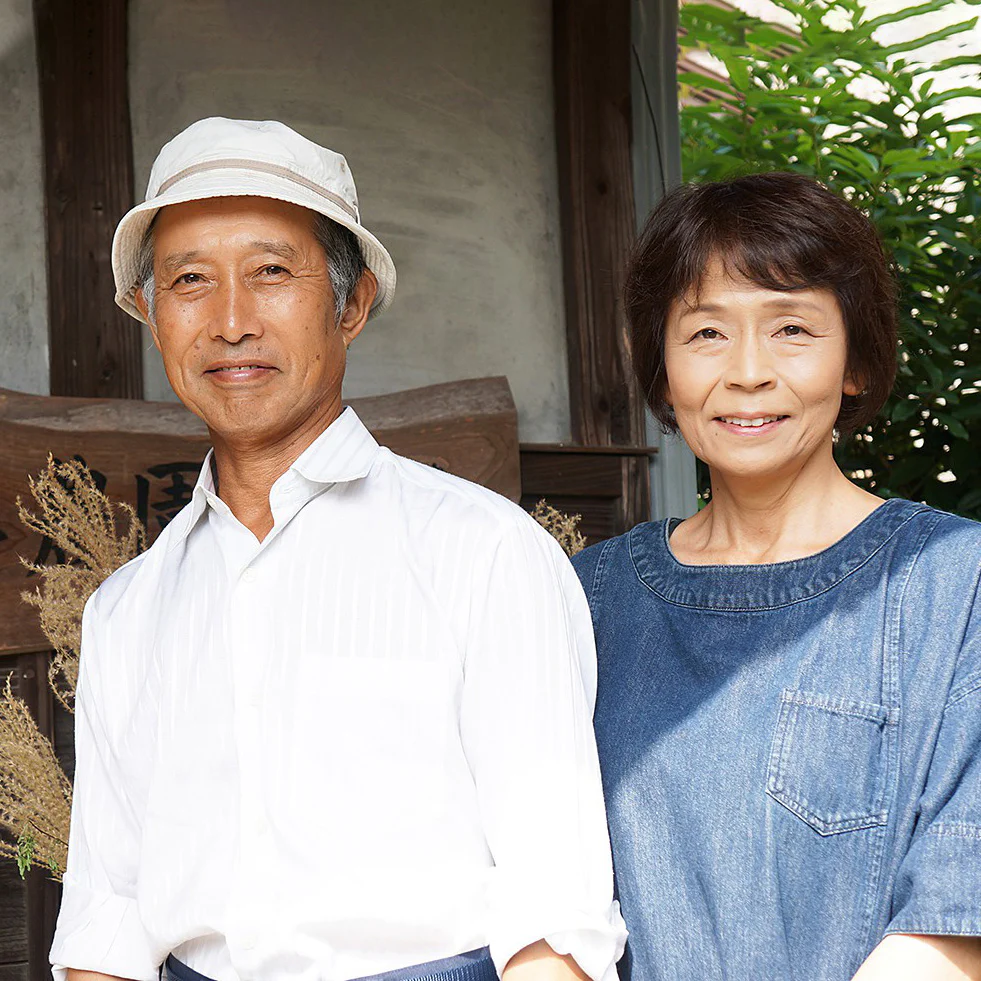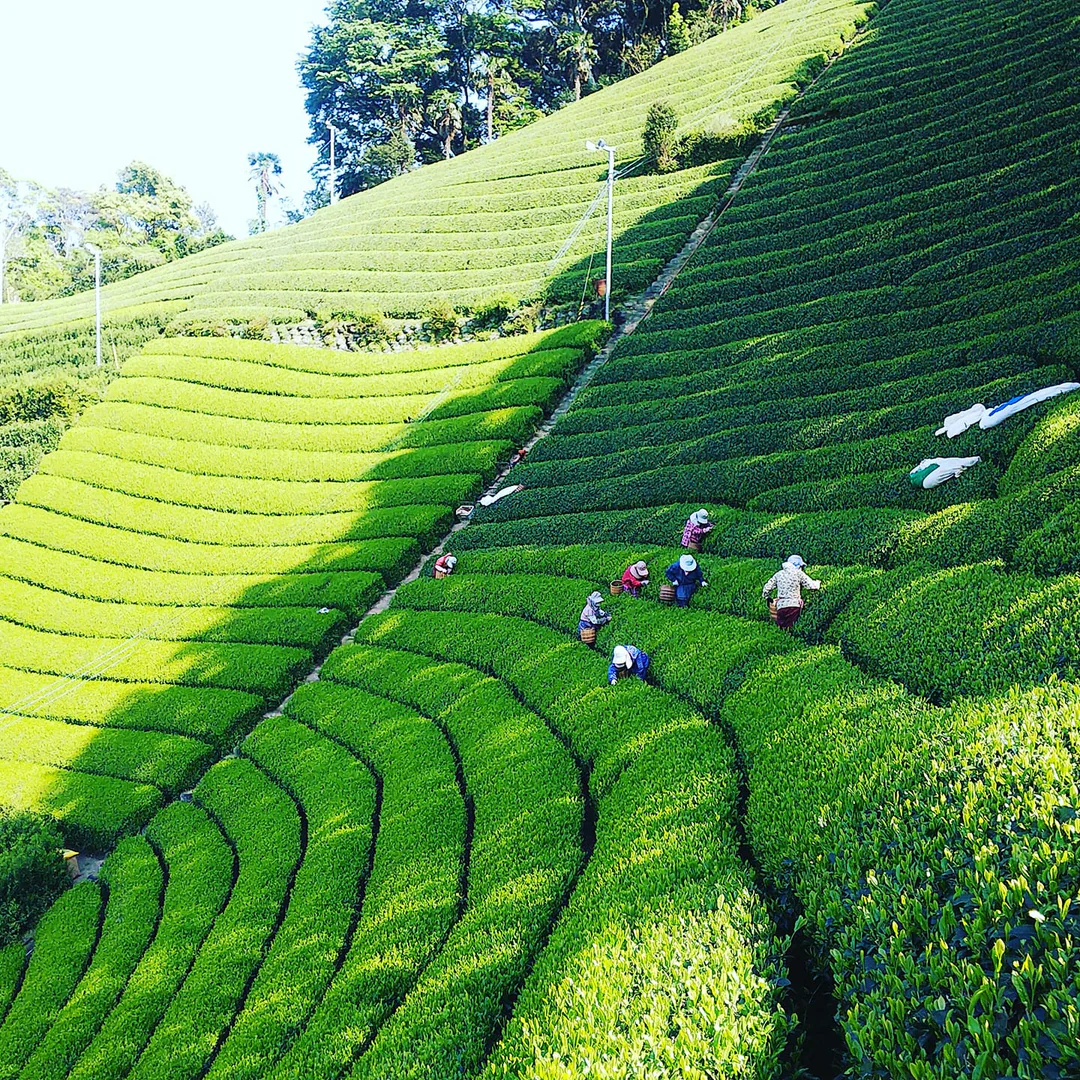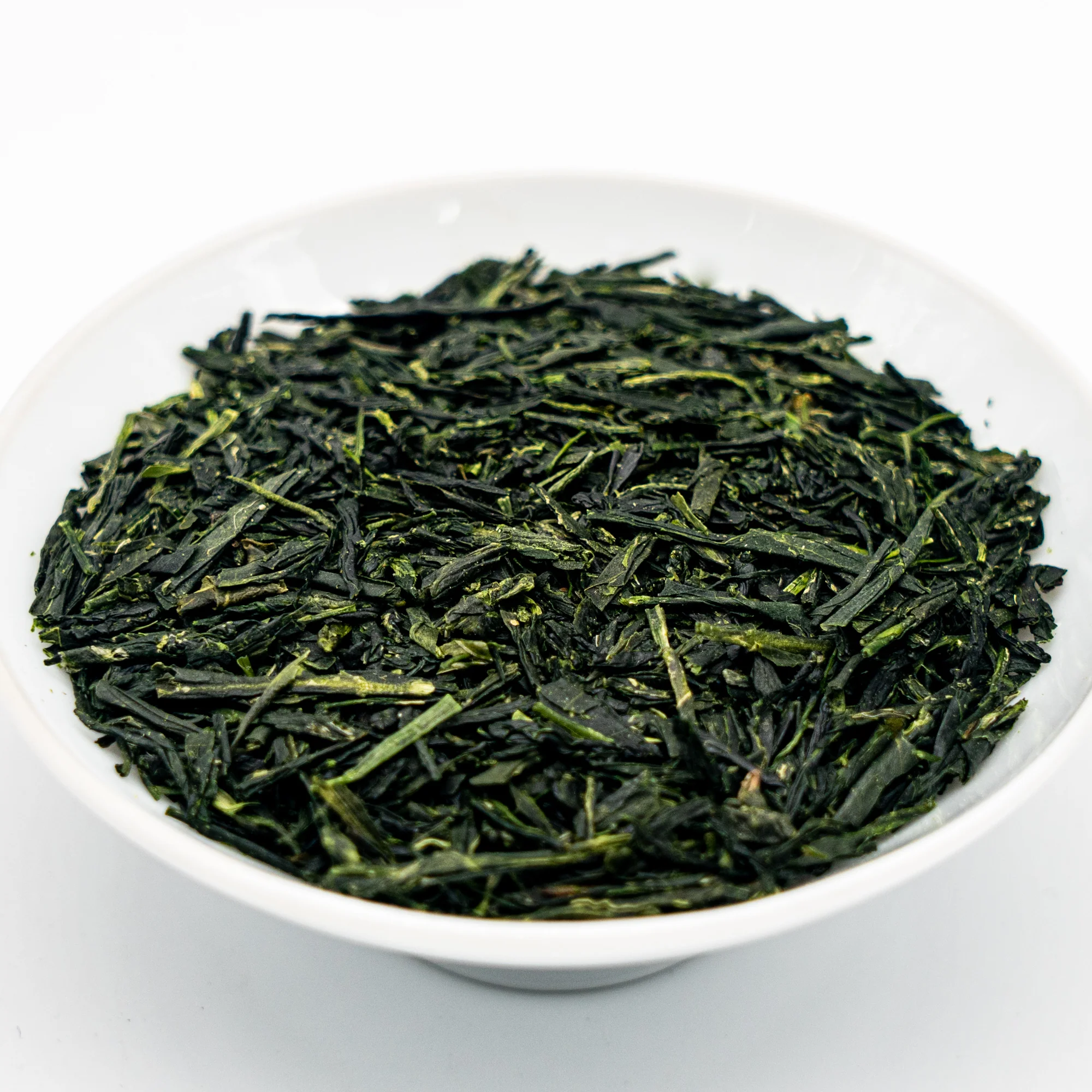Bright and creamy with a round body and luscious mouthfeel, this kamairicha is wonderfully aromatic and refreshing. Its powerful aroma is courtesy of the Koushun cultivar, and its savoury, somewhat nutty taste can be attributed to the pan-firing process.
Unlike the vast majority of Japanese green teas, kamairicha is not steamed to stop oxidation. Instead, the leaves are pan-fired in a method derived from Chinese green tea production. Kamairicha is much older than sencha, dating back over 500 years. Today, however, less than 0.5% of Japanese tea is kamairicha. Compared to sencha, it is less astringent and has a markedly different aroma, slightly nutty and roasty, but still very green. Despite its Chinese-style, kamairicha tastes quite different from most modern Chinese green teas, remaining distinctly Japanese in character.
Of Shizuoka's many tea-growing regions, tea from Honyama is praised for its transparent and elegant taste, deriving from the mineral rich soil and the subtle, natural shade of fog and mountains. Tea grown on the slopes that border the Abe and Warashina Rivers, which flow through Shizuoka, is said to be Honyama tea. Along with the neighbouring region of Kawane, Honyama tea is often grown at a higher elevation than most other Japanese teas. Tea from this region has been grown and revered for centuries, and has even been presented as tribute to the Emperor by order of Tokugawa Ieyasu in the Edo period. Typically unshaded and lightly-steamed, honyamacha is known for its clear, crisp taste, and distinctive aroma, known as yama no kaori (山の香) or mountain aroma.

Cultivar: Koushun
Region: Honyama, Shizuoka
Producer: Moriuchi Chanoen
Harvested: June 9, 2021
Elevation: 150m
Picking: Handheld Machine

Brewing Instructions

Tea/Water Ratio

Water Temperature

Brewing Time
Meet the Producer
Moriuchi Chanoen (森内茶農園)


Cultivar: Koushun
Our Loose Leaf Selection
View all































